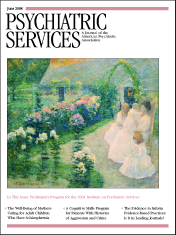The Postpartum Effect: Deadly Depression in Mothers
Why is it that nearly half a million women suffer from some form of postpartum depression? In the latest revision of The Postpartum Effect: Deadly Depression in Mothers, Arlene M. Huysman, Ph.D., and Paul J. Goodnick refresh our memory of shocking news reports of infanticide and filicide. Huysman, drawing from her personal experience as a clinical psychologist, adds credibility through vignettes and patient anecdotes that nicely complement our knowledge about publicized cases heard over the years in the national media. In addition, the book sheds light on several international cases, thus illustrating the global prevalence of this deadly form of depression.
Listing numerous references and sources, the book's strength lies primarily in its well-written and reader-friendly approach, making it a comfortable read for audiences ranging from the general public to health professionals. The authors begin by focusing on postpartum depression and on the many myths that surround the postpartum period. Each successive chapter addresses—and in some cases answers—various questions that have intrigued many people about this mysterious illness. Several possible causes of the disorder are identified: hormonal, chemical, and life stressors.
The Postpartum Effect strongly reinforces the need for careful patient monitoring during the crucial time after childbirth. Examples are provided to illustrate the unfortunate consequences of postpartum depression when it is left undetected and untreated. Furthermore, the book goes on to define a less common term—progressive postpartum depression—which may last many months or even years after the postpartum period. Later chapters of the book attempt to identify patients who are at risk of developing mood disorders and describe criteria for diagnosis and treatment modalities.
The authors boldly bring out controversial views among the medical and justice communities. The book attempts to add clarity to the raging debate about who should screen patients, who is responsible for treatment, who should stand trial, and who is at fault. A glossary defining commonly used terminology and a detailed list of resources complete the book. The authors' passion for informing the public is evidenced by the pedagogical nature of their writing. The ongoing messages of early prevention, accurate diagnosis, and prompt intervention are consistently integrated throughout the text.
As a fellow in women's mental health, I found that many parts of this book hit very close to home. I applaud the authors for their courageous personal anecdotes in addressing the lack of knowledge about postpartum mood disorders. This well-written book meets its goal of educating not only the public but the entire medical profession.
Dr. Babber is a women's mental health fellow at the University of Illinois at Chicago.



